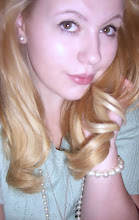INTERVIEW WTH HAIRDRESSER
INTERVIEW WITH PERSON DYING HAIR
INTERVIEW WITH PERSON WHO WAS BULLIED
INTERVIEW WITH OLD PERSON
OPENING SEQUENCE
INTERVIEWS
We have 3 interviewees who we are going to include in our documentary.
The first is Hannah Burkey who is dying her hair for the first time. We will interview her about how she is feeling about dying her hair permanently for the first time and will ask her how it is before, during and after so we can see how people think it will affect their lives.
We will then interview Andy Moran, of Callaghan & Moran Hairdressers in
We will finally interview Patricia Williams, asking her what hair styles she's had throughout her life, what she thinks of young peoples hair today, and how it differs from when she was our age. We will also ask questions regarding how often she gets her hair coloured and cut etc.
INTERVIEW QUESTIONS
HANNAH
Before
Have you dyed your hair permanently before?
Why haven't you dyed it before?
What colour are you dying your hair?
Are you excited to do it
How do you think it will effect your life?
Do you think you're ready to dye your hair?
During
How do you feel?
Is it what you expected?
How do you think the colour will turn out?
Do you think your friends will like it?
After
Do you think it looks good?
Does it look how you expected it to?
Would you dye your hair again?
Are you worried about what everyone will think?
Was it fun to dye your hair?
ANDY
How long have you been a hairdresser for?
Do you enjoy your job?
What age range of customers do you work with most?
What are you opinions on young peoples hair nowadays?
What is the 'craziest' hair style and colour you've had to do for someone?
What is the 'craziest' hair style and colour you've had yourself?
Do you agree with stereotypes? If so, which ones?
Would you ever not hire someone based on their hairstyle?
How many people who get their hair cut have their hair dyed too each day?
Are there any hair styles that a lot of people ask for?
Which celebrities hair style do people ask for most?
Are there any celebrities that inspire you because of their hair?
What is the most popular hair dye colour?
PAT
How many different hair styles have you had?
Were the hairstyles you had popular at the time?
What colours have you dyed your hair?
How much time do you spend doing your hair?
Do you enjoy doing your hair?
How long does it take to get your hair cut and coloured?
Do ypu enjoy getting it cut?
Do you change the style of your hair a lot? If so, how often?
Do you have a particular celebrity whose hair you base yours off?
What do you think of young people’s hair today and how do the styles differ from the hairstyles you had at that age?
Have you ever judged someone based on their hair style and colour?
VOX POPS
1. What is the first thing that comes to your mind when you hear blonde?
2. What is the first thing that comes to your mind when you hear brunette?
3. What is the first thing that comes to your mind when you hear ginger?
4. What is your natural hair colour?
5. Who is your hair icon?
6. What is the craziest thing you’ve done with your hair?
7. Is your hair naturally curly or straight?
8. What do you think of young people’s hair today?
















